Baieta, Paris | Brilliant Nicoise Cooking by Julia Sedefdjian, A-
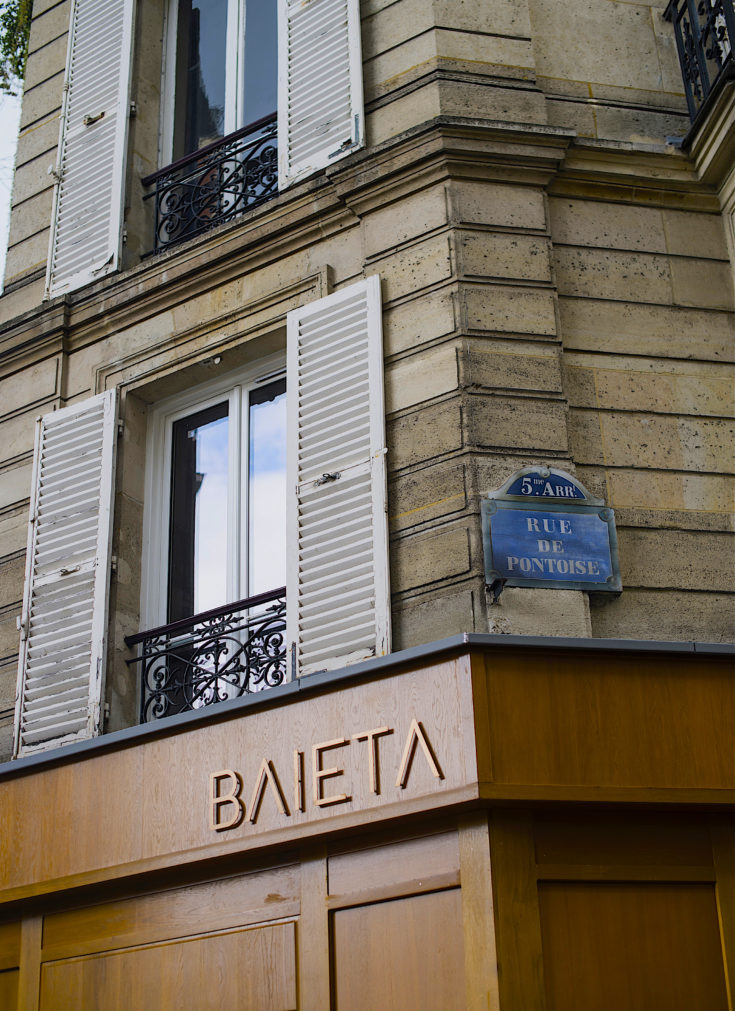
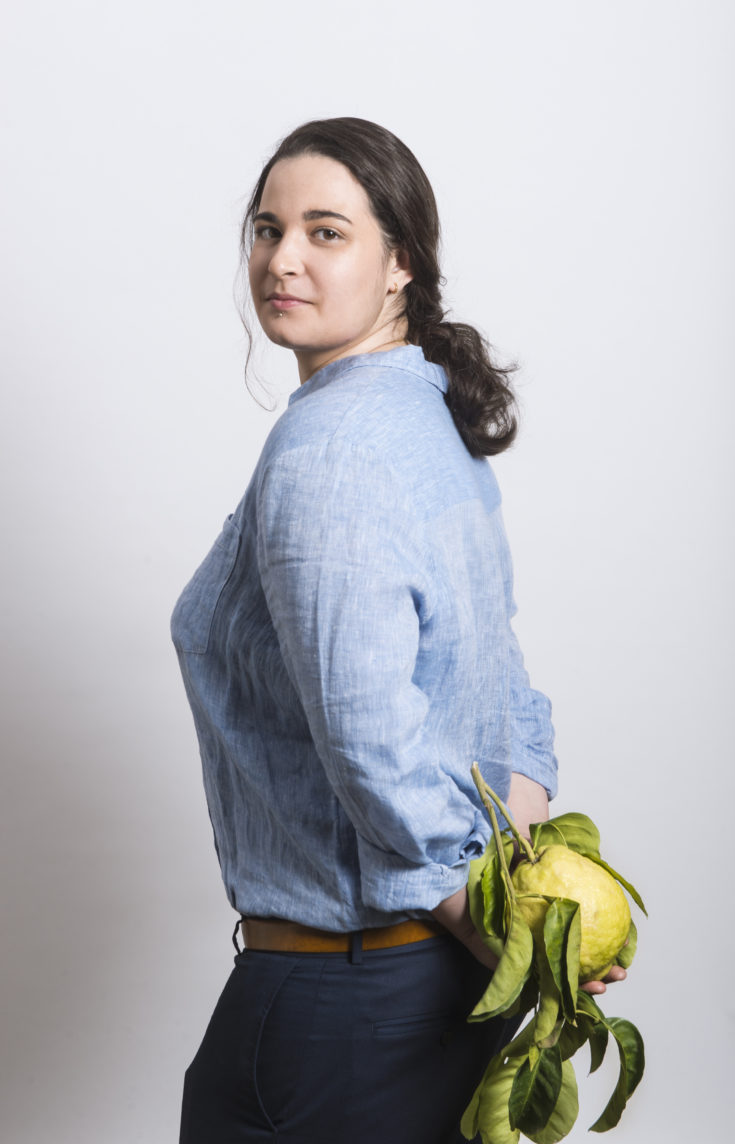
Julia Sedefdjian
In Nicoise dialect, a ‘baieta’ is a little kiss. In Paris, Baieta is brilliant young chef Julia Sedefdjian’s new restaurant in the Latin Quarter and a place where any meal has the poignancy of receiving a succession of little kisses. This is because Sedefdjian’s personal riff on the cooking of Nice, her hometown, and Provence is so sincere, succulent, sunny, shyly sensual and stunning in its technical perfection. And all this is from a chef who is only 23 years old and who won her first Michelin star while cooking at Les Fables de la Fontaine when she was 21 (she started at the restaurant when she was 17 and became its chef at 20).
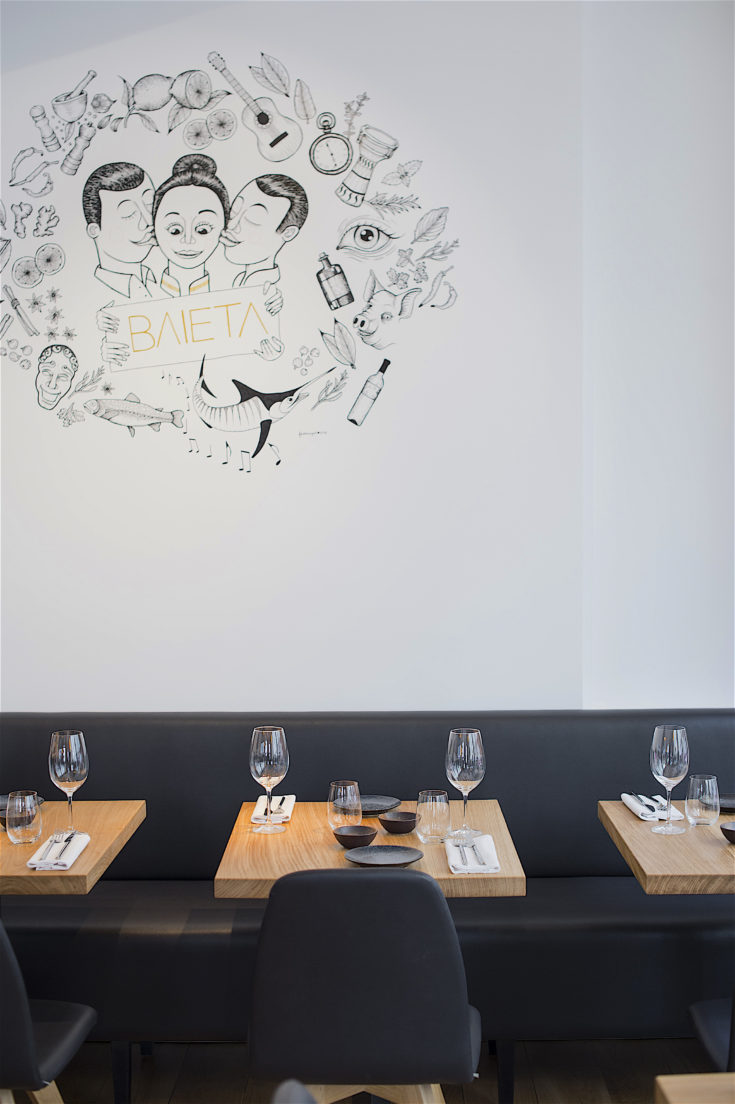
Sedefdjian created her restaurant with Sébastien Jean-Joseph and Grégory Anelka, two colleagues she met while working at Les Fables de la Fontaine. Jean-Joseph is her sous-chef, while the charming and very friendly Anelka runs the dining room. She calls them “my brothers,” and the three of them are depicted in a drawing by their favorite tattoo artist on the dining room wall.
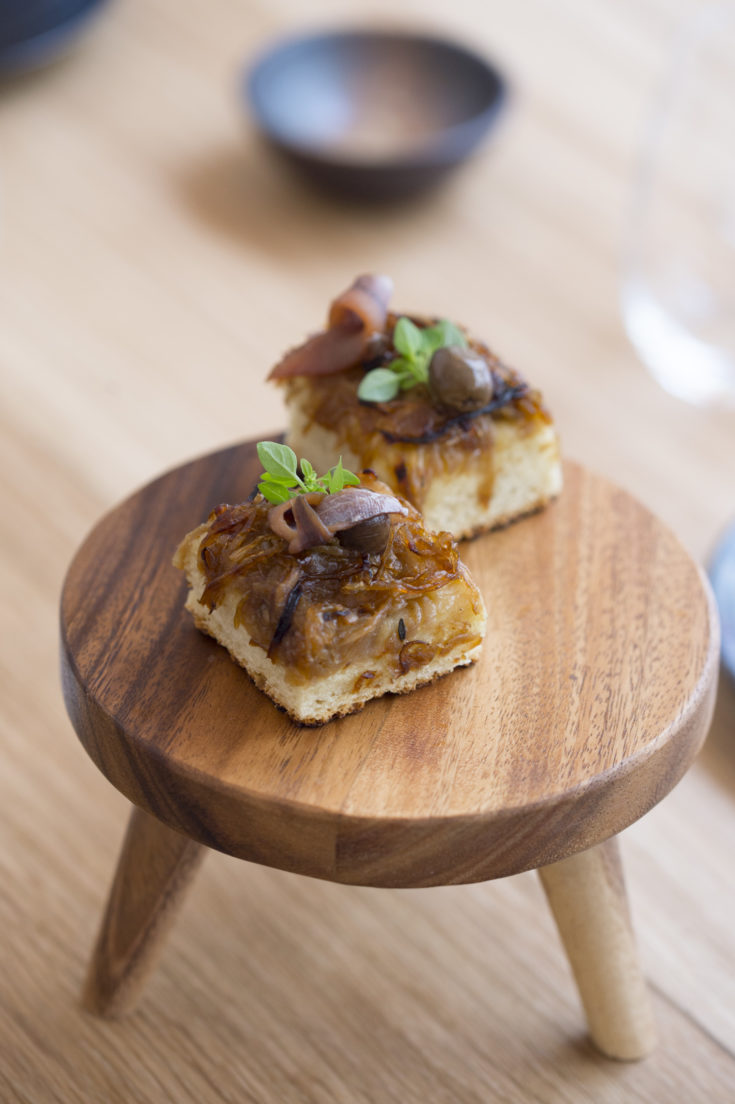
While you read the menu at Baieta, several little hors d’oeuvres are served to pique your appetite. Sedefdjian’s take on pissaladiere, the sautéed onion, black olive and anchovy tart of Nice–something I love, was excellent on a focaccia like base.
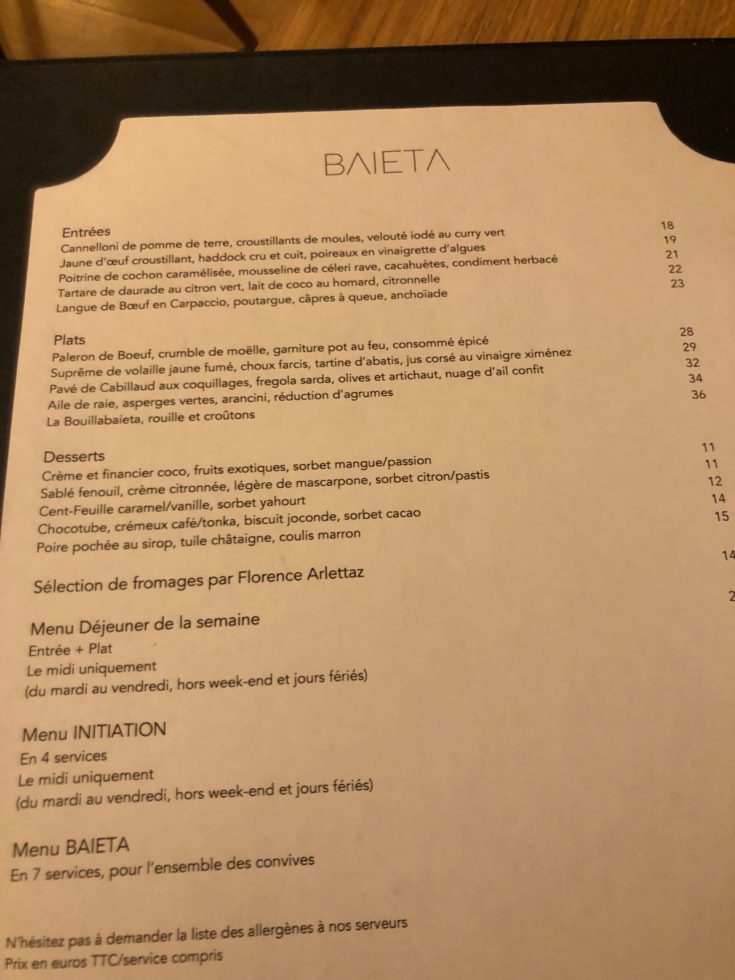
The menu was very tempting, too, especially for someone like me, who loves the food of Nice and southern France, all those wonderful dishes that are found in one of my favorite cookbooks, La Cuisiniere Provencale by J.B. Reboul.
When he came to take our order, Grégory Anelka told us that the two signature dishes here are the “Jaune d’oeuf croustillante,” a starter, and the “Bouillabaieta,” Sedefdjian’s version of bouillabaisse. We decided we’d try them both, and also the caramelised pork belly with celery rave puree, peanuts and an herby green sauce and cod with cockles on a bed of Sardinian fregola pasta with artichokes and olives under a cloud of preserved garlic. The one dish that I’d been hoping to find on the menu, Sedefdjian’s superb version of a classic aioli–cod with vegetables and potatoes with garlic mayonnaise, wasn’t an option, but I’m hoping it will appear on a future menu, since I’ve never forgotten how good it was since I had it at La Table de la Fontaine when she was cooking there.
While we waited over a glass of white wine, both of us noticed something else very special about this restaurant, which is that it has a noticeably happy, relaxed ambience. This is a welcome new trend in Paris, where serious food is increasingly being freed of a conventional corset of formality and stilted pleasure-wilting self-importance.
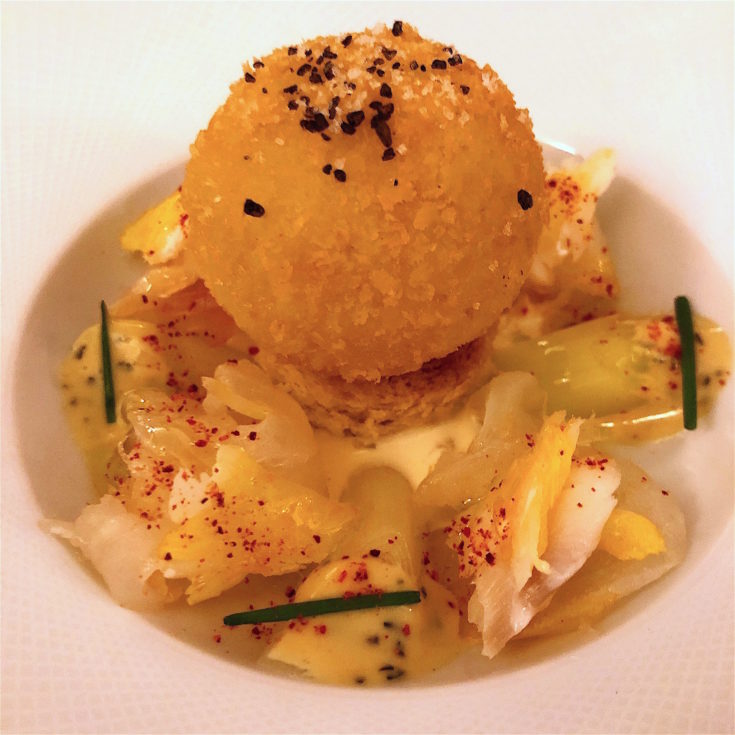
The egg yolk in a crunchy sphere showed off just the fact that Sedefdjian is an inventive, hard-working and very talented chef with a huge future. When it arrived at the table, my first reaction was to admire it, but I wondered if it would all come together on the palate. It did. Served on a bed of smoked and raw haddock, the yolk spilled out on to the fish, poached leeks and seaweed vinaigrette when the sphere was pierced and bound this homey and deeply satisfying dish together.
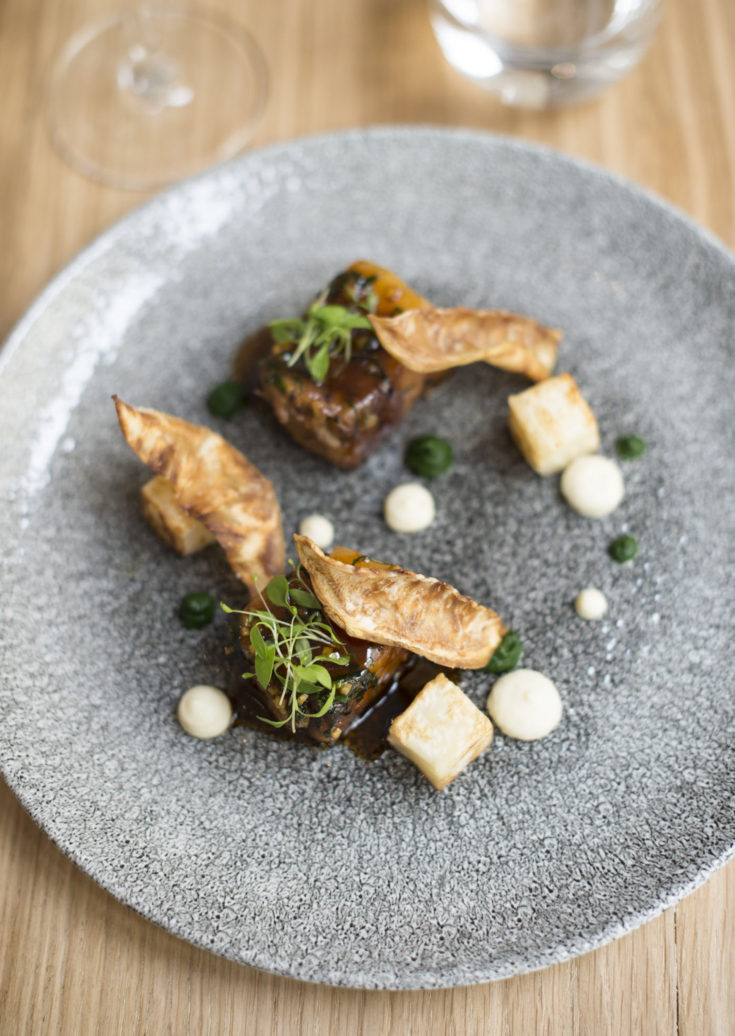
The caramelised pork belly was a beautiful plate of food, too, with tender chunks of pork glossed in a beautiful jus, celery rave prepared three ways–as chips, in seared cubes and as a puree, and the green puree of ramps (l’ail des ours, garlic of the bears) was a perfect foil for the wonderfully fatty meat.
“Both of these dishes could be served in a haute-cuisine restaurant,” Bruno observed, and he was absolutely right. Happily, however, they’re available at a charming place without the stratospheric prices associated with that most exalted and so rarely experienced level of French cooking.
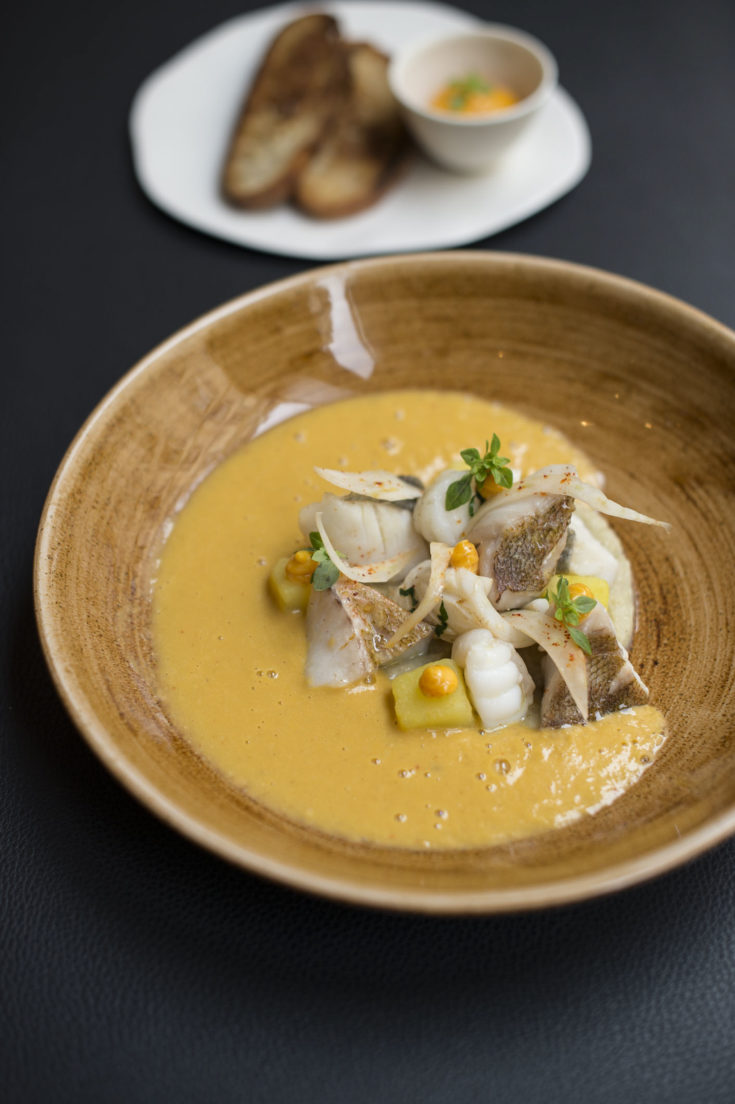
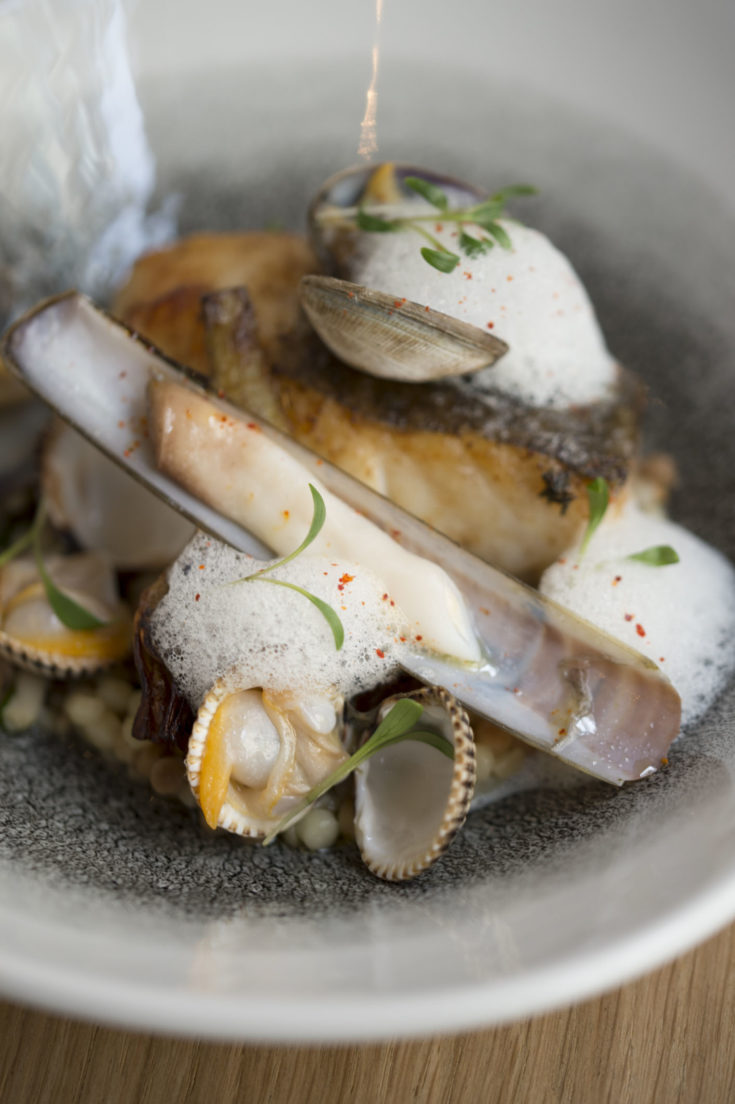
Our main courses were stunning. The ‘Bouillabaieta” was an especially good dish, since Sedefjdian had recomposed it, cooking the fish and shellfish separately and then combining it with a potato-puree thickened fish stock that was accented by little toasts with rouille served on the side. What made this so excellent is that the fish didn’t lose their natural flavors to the single ruddy stew, as is usually the case, but remained firm and bright with flavor.
The cod was outstanding, too–a thick perfectly cooked slice of impeccably fresh fish on a bed of al dente fregola with steamed cockles and razor-shell clams, artichokes and slivered olives under a veil of garlic. Here the flavors complimented each other rather than melding together, another example of Sedefjdian’s respect for the produce she works with.
What also impressed about this meal was the excellence of its rhythm. On a very busy night–many tables turned twice, the timing–both in terms of cooking and serving, was flawless. In fact, the only thing about this meal that I found unimportantly wanting was the wine list–to wit, I’d have loved to eat this food with a nice bottle of Bellet, the wine from Nice, but none was to be found on the list.

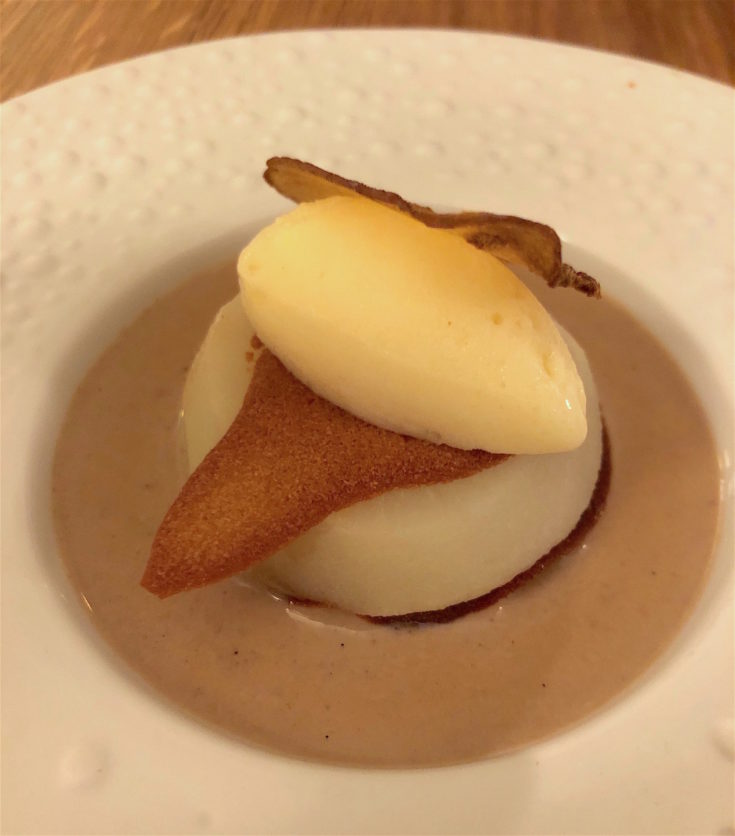
Our desserts were excellent, too. I loved my delicate fennel spiked sable topped with dots of lemon cream and meringue, while Bruno tucked into a cheeky poached pear with a tuile that stuck its tongue out at him and was garnished with a pool of chestnut ice and chestnut coulis.
Sedefdjian is one of the best young chefs in a new generation who are revisiting the regional roots of French cooking to renew the luster of Paris as the Old World’s pre-eminent dining destination, and I am certain that she will become a chef on par with predecessors like Paul Bocuse and Joel Robuchon–she’s just that good. So go now to catch a rising star and have a really lovely meal without a wound to your wallet.
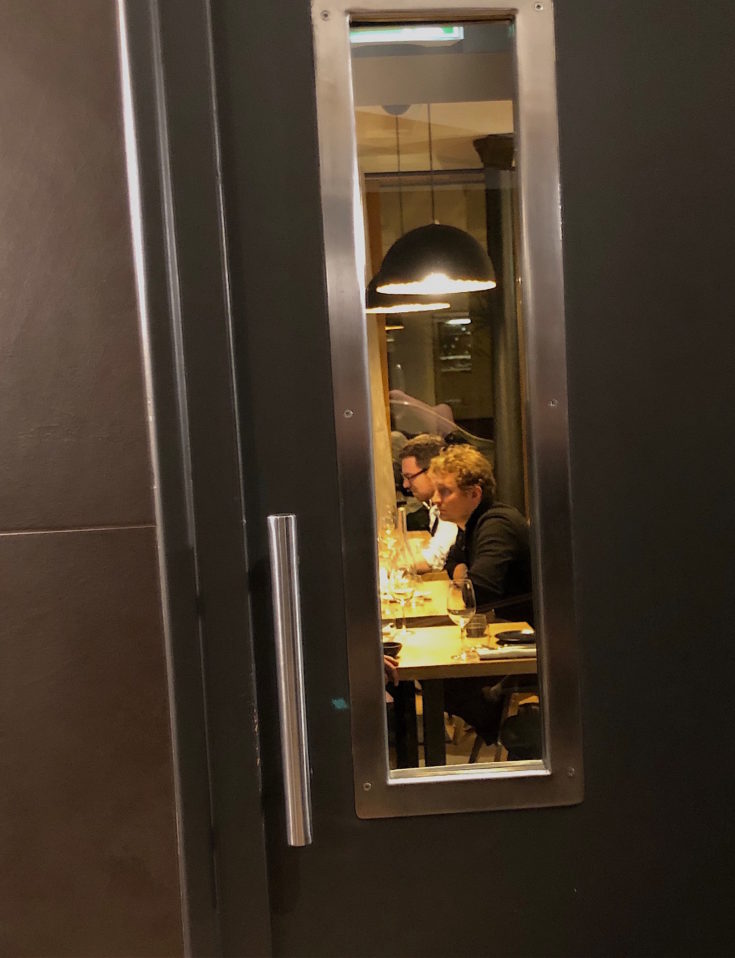
The view from the loo
5 rue de Pontoise, 5th Arrondissement, Tel. (33) 01-42-02-59-19. Metro: Maubert-Mutualite. Open for lunch and dinner Tuesday to Saturday. Closed Sunday and Monday. Average 45 Euros. www.restaurant-baieta-paris.fr




